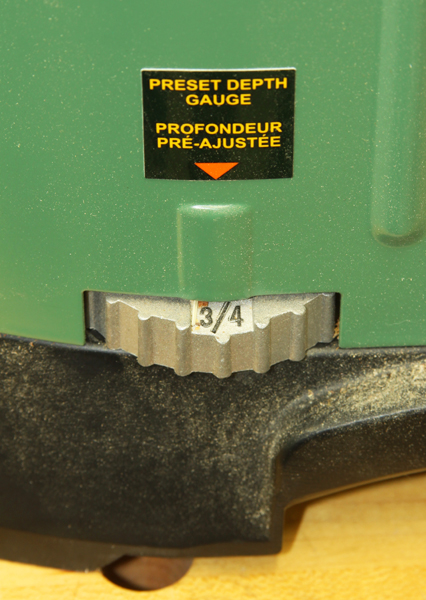 The other day I was surfacing some lumber for a project, and I reached for the depth stop on my planer. In a few clicks I was once again locked into the usual 3/4-in. thickness setting. I bet it’s the one that gets used the most on your planer, too. I wonder if that’s a good thing?
The other day I was surfacing some lumber for a project, and I reached for the depth stop on my planer. In a few clicks I was once again locked into the usual 3/4-in. thickness setting. I bet it’s the one that gets used the most on your planer, too. I wonder if that’s a good thing?
It’s interesting and kind of a pleasant shock to the senses when a project calls for something other than this typical dimension. Now and again, I have to surface boards down to something less than 3/4 in. in order to flatten them, and it’s curious to see how that change in stock thickness can affect the look of a cabinet door frame, table top or drawer part. When I have the opportunity to buy really thick boards, it’s exciting to see the extra heft— and for a while at least, to lug them around the shop. Same goes for turning the wall of a bowl. I usually don’t measure this but just keep peeling off the wood until the proportion seems right. Sure, there’s a number to express whatever the thickness is, but even if I measured it, it wouldn’t mean much.
Still, there’s something safe and reassuring about sticking with what we know when it comes to choosing lumber thickness for a project. Maybe it’s fear of making a design mistake or the thought of wasting money on our investment that keeps us on the straight-and-narrow “3/4 inch.” So typically — and maybe too often — we use the standard planer settings and go from there.
This all reminds me of something James Krenov once said in his book, “The Impractical Cabinetmaker,” regarding lumber thickness:
By in large, many of us are not aware enough of what various dimensions mean, except as numbers. And they are rather vague and uninteresting numbers at that—one inch, three-quarters, five-eighths, one-half inch, and so forth … I believe that in the course of time dimensions as numbers decrease in importance. It is the way a piece of wood feels in our hands, how we measure and experience it by eye and touch, that really matters.
Don’t be afraid to step outside of the “Three-quarter Inch Paradigm” from time to time. It just might be a breath of fresh air.
Catch you in the shop,
Chris Marshall, Field Editor





